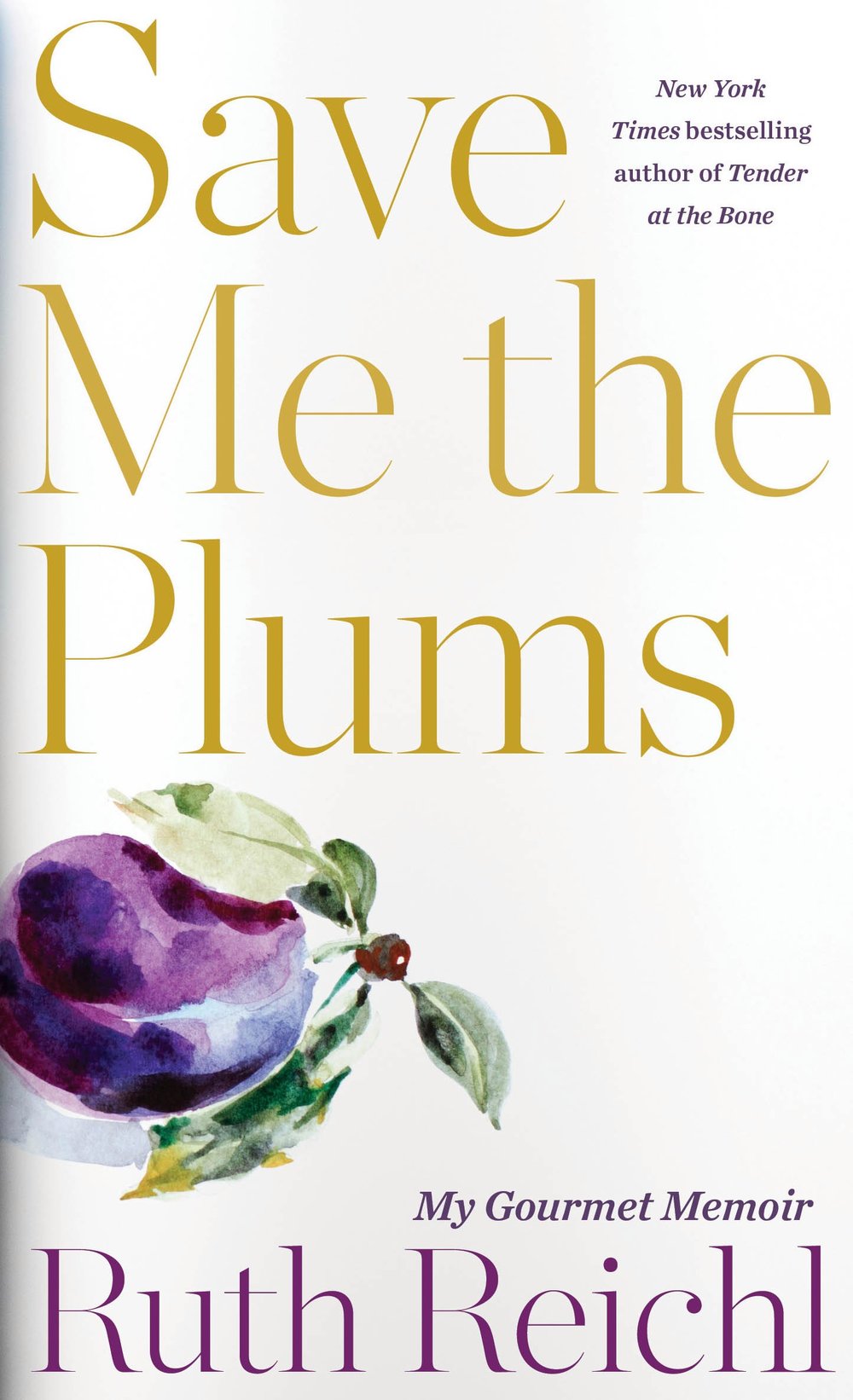A Plum Job
 I devoured food writer Ruth Reichl’s memoir, Save Me the Plums: My Gourmet Memoir, fitting it in around everything else I was doing over Christmas and New Year’s. My late mother loved both Gourmet and its baby sister publication, Bon Appetit, so I’d been reading them for many years and always admired the fine writing in Gourmet, in particular. (I realize now that some of that time overlapped the period when Reichl was editor-in-chief.)
I devoured food writer Ruth Reichl’s memoir, Save Me the Plums: My Gourmet Memoir, fitting it in around everything else I was doing over Christmas and New Year’s. My late mother loved both Gourmet and its baby sister publication, Bon Appetit, so I’d been reading them for many years and always admired the fine writing in Gourmet, in particular. (I realize now that some of that time overlapped the period when Reichl was editor-in-chief.)
Over this Christmas and New Year’s, I devoured food writer Ruth Reichl’s memoir, Save Me the Plums: My Gourmet Memoir. My late mother loved both Gourmet and its baby sister publication, Bon Appetit, so I’d been reading them for many years and always admired the fine writing in Gourmet, in particular. (I realize now that some of that time overlapped the period when Reichl was editor-in-chief.)
The book begins with Reichl’s childhood, notably a day when she pored over old copies of Gourmet magazine, utterly entranced, in a used bookshop, and ends when S.I. Newhouse, the billionaire owner of Conde Nast, closes the magazine at which she is, by then, editor-in-chief. (The classic structural technique of echoing the opening at the end.) In between, she has learned to enjoy the luxuries that come with a top job at Conde Nast — throwing lavish launch parties, a clothing allowance, a driver, first class air travel — a role she shared with her Conde Nast counterparts, Anna Wintour (Vogue), Graydon Carter (Vanity Fair), David Remnick (The New Yorker) and Paige Rense (Architectural Digest). But she is also there when the 2007-8 global financial meltdown devastates the media landscape.

At one point, shortly before the dramatic denouement, she was researching a story on Paris-on-a-budget when she found herself in a fine, but modest, restaurant and recognized a stately old man she’d known many years earlier. Why was he eating at such a pedestrian bistro, she asked? He said, “How young you are. When you attain my age you will understand one of life’s great secrets. Luxury is best appreciated in small portions. When it becomes routine it loses its allure.”
Another literary device: a moment of revelation. Exactly what Reichl needed to hear considering months later she would be out of a job.
I sometimes wondered if what I loved most would be “inside baseball” to many non-journalists. There’s a funny section when she’s first hired at Gourmet as she struggles to decipher magazine publishing lingo — “teeosee?” (“table of contents), “adjacencies?” (advertisements placed next to text), and “inadequate sep” (ads that are poorly spaced in relation to editorial content). There are also stretches given over to her staffing challenges and sparring with art directors and publishers. Once she figured it out and became comfortable with her role, though, and given a Conde Nast budget, she brought to the magazine a daring (at the time) approach: be more down-to-earth while still pleasing foodies, and make the content more literary. (To that end, she enlisted A-list writers like Calvin Trillin, Michael Lewis, Pat Conroy, David Rakoff, Ann Patchett, and David Foster Wallace, whose 10,000 word article for Gourmet, “Consider the Lobster,” is legendary.) In those heady days, she could even fly her staff to Paris to experience what it’s like to to eat, cook, and shop there.
I confess I haven’t read a lot of Reichl’s earlier books: a memoir about her career as a restaurant critic, nor her cookbook (My Kitchen Year: 136 Recipes That Saved My Life). I’d really known her in her restaurant critic days at The New York Times. But like all great meals, or memoirs, Save Me the Plums left me both satiated and yearning for more.